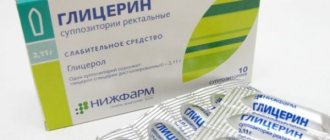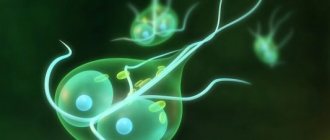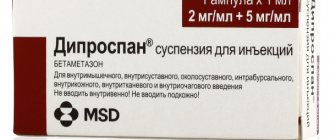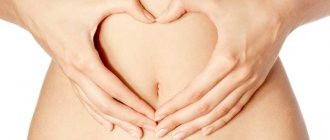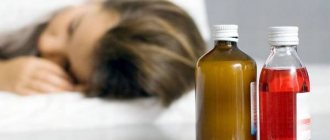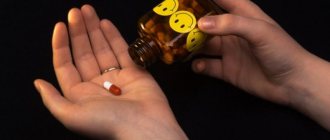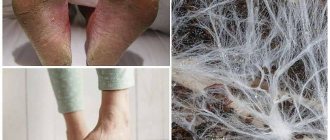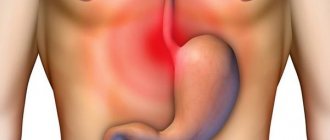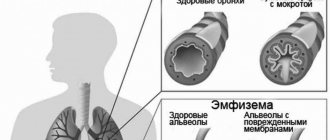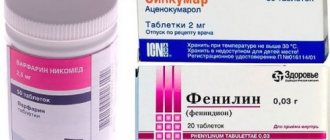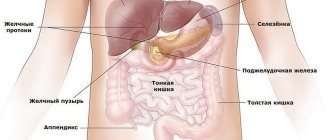Giardia is a parasite that can live in the human intestines and liver. According to some estimates, about a hundred thousand Russian children become infected with giardiasis every year. How to deal with these dangerous organisms that can damage your baby's internal organs? In this article you will find all the possible ways to identify Giardia in a child and remove it using folk remedies.
A little history
Giardiasis has been known to people for a long time. It is believed that it was first described in 1859 by the Czech anatomist D.F. Lambl, who described in detail what Giardia is. The single-celled pathogen Lamblia was named in his honor.
But in Europe, the disease has a different name - giardiasis, and the simplest organism is Giardia . In honor of the French scientist Alfred Giardi, who described the role of Giardia in the formation of diarrhea.
However, earlier mentions of the trophozoid form of Giardia are also known. Thus, back in 1681, the Dutch naturalist A. Leeuwenhoek, using a primitive single-lens microscope (of his own design), discovered Giardia in his own liquid feces.
Is it necessary to treat Giardia in children?
To treat or not to treat Lamblia in children - debates on this topic still do not subside. Scientists identify three main approaches:
- Always treat. Russian doctors believe that treatment in children should be carried out even when there are no obvious signs of invasion, and treatment should be carried out in stages; a treatment regimen for giardiasis in children has been developed, plus additional treatment methods (homeopathy and herbal medicine)
- Treat only for severe diarrhea. How giardiasis is treated in children in other countries - American experts recommend that treatment for giardiasis in children begin only with severe diarrhea and with severe symptoms, and WHO experts also believe
- There is no point in not treating at all. The third approach - treating Giardia in a child does not make sense, since after treatment there is a high risk of re-infection, the body itself will cope with the invasion
Thus, parents, having found out which doctor treats giardiasis in children (and this is a pediatrician and infectious disease specialist), will have to individually resolve this issue with them.
Diagnostic methods
To determine the symptoms and treatment of giardiasis, special diagnostic measures are carried out.
Here they are:
- A scatological examination involves checking stool. This is a harmless procedure, but it does not guarantee 100% results.
- Serological diagnosis is a blood test. It is especially effective in the first three weeks after infection. This determines the presence of infection in the blood.
- Duodenal examination is a probing to examine bile. The procedure is performed only for children over 10 years old.
It is worth considering that the symptoms of giardiasis are varied and parents should pay attention even if at least one of them is detected.
In this case, you should immediately consult a doctor. The earlier the problem is diagnosed, the greater the likelihood of a quick recovery. The first symptoms include disruption of normal digestion, as well as the occurrence of persistent constipation and diarrhea. To take the test correctly, you need to take a special container.
It is important that the utensils are sterile and clean. It is recommended to take the analysis several times.
Giardiasis treatment in a child: treatment regimen, duration
In order to get rid of giardiasis infestation, treatment in a child begins only after diagnosis. To the question of how long it takes to treat giardiasis in children, we will answer - the treatment is long, so you need to be patient.
Treatment is difficult due to a strong decrease in the child’s immune defense and the addition of concomitant diseases of other systems and organs. The choice of effective and low-toxic antiprotozoal agents is limited. The emergence of drug-resistant forms of parasites complicates therapy.
Treatment regimen for giardiasis in a child
How to cure Giardia in a child? Every parent asks this question. Treatment of giardiasis infestation is carried out in stages, each stage using a large set of medications that are selected individually.
The 3-step therapy algorithm includes:
- preparatory stage
- antiparasitic stage
- recovery stage
Let's take a closer look at each stage of how to cure giardiasis in children.
Preparatory stage
The more pronounced the symptoms and the stronger the intoxication, the longer this period is - from 1-2 weeks to 1 month. It begins with a diet, taking enzymatic preparations and sorbents, choleretic agents and antispasmodics (no-spa). Already at the first stage, the doctor prescribes medications for treatment in order to improve the functioning of the digestive tract, reduce intoxication, and improve immune status. An unfavorable environment for protozoa is created with the help of choleretic drugs - allahol, mannitol. Antihistamines (Zyrtec, Telfast) are prescribed.
Smecta or polysorb are used as sorbents, and enzymes such as enzistal, hilak-forte, festal, mezim-forte. The dose of the drug and the regimen of administration are prescribed only by a doctor.
Throughout the treatment, a therapeutic diet is used and carbohydrates are limited.
Antiparasitic stage
Special drugs are introduced that can destroy the protozoa. These are metronidazole, tinidazole, furazolidone, mepacrine, makmiror, nemazole, albendazole. Typically, after 3-5 days of therapy, the health condition worsens due to toxins entering the blood.
At this stage, antihistamines should be prescribed to reduce intoxication and laxatives to remove dead parasites and their decay products. Treatment is carried out in 2 stages, with a break of 10 days. The dose is prescribed by the doctor based on the severity of the disease, age, and weight of the child.
Recovery stage
Configured to increase protective forces, normalize inflamed areas of the intestines, eliminate intestinal dysbiosis, cleanse from decay products, eliminate vitamin deficiency. A diet is prescribed again (porridge, vegetable purees, fruits, vegetables, sour dairy products). Baked apples are highly to enhance intestinal motility.
To reduce the toxic effects of protozoan breakdown products, children aged 5 years and above are recommended to drink mineral water 1 to 2 times a week. To do this, you should take 200 ml of warm mineral water early in the morning on an empty stomach, lay the child on his right side with a warm heating pad for 1 hour.
Pathogenesis of the disease
The Giardia organism consists of one cell, 4 pairs of long flagella for movement, and a suction cup, which is used to capture and hold it in the host’s body. The shape of the cell is pear-shaped. The external environment is considered unfavorable conditions for life. The cell organism is transformed into cysts - dense, immobile bodies covered with a protective membrane. The coating helps them survive exposure to sunlight, high and low air temperatures. After being excreted from the intestines with feces, they remain viable and are pathogenically dangerous for 3 months.
Entering the human body through the mouth, they are absorbed into the mucous membrane. While in the intestines, Giardia sheds its dense protective membranes and enters the active stage of reproduction. The life cycles of the Giardia organism have 2 phases: immobile, or cystic, mobile (vegetative) in the host body. For every 10 hours, their number doubles. Numbers reach up to a million organisms per 1 cm² of intestine.
Giardia structure
The main habitats are ponds with standing water, sewers, and animal feces. Infection occurs through contact with these environments. The disease develops in adults and children, but the child’s body is more susceptible to infection. The Giardia organism is localized in the upper parts of the small intestine.
The mechanism of development of the disease is the destruction of the natural microflora of the intestines of humans and animals. Nutrients for the functioning of Giardia are obtained from the intestinal mucosa. As a result, the body does not receive the necessary microelements, minerals, vitamins and amino acids formed during metabolic processes. A disturbance of general metabolism develops, and characteristic symptoms appear.
For children, the process is dangerous because it destroys the normal microflora of the intestinal tract, which leads to dysbacteriosis, vitamin deficiency, and decreased immunity. The child becomes susceptible to infectious and viral diseases and often gets sick.
This is what Giardia looks like
Preparations for the treatment of Giardia in children
The doctor decides how to treat Giardia in children, since various factors play a role here: the effectiveness of the drug, its tolerability and safety, the age and concomitant diseases of the child are taken into account.
For the treatment of giardiasis infection, drugs of 3 groups are used:
- nitromidazole:
- Ornidazole (Tiberal) - for children weighing up to 35 kg, a single dose of 30 mg per kg of body weight at night, for children heavier than 35 kg - 1.5 g, effectiveness 90%.
- Tinidazole - contraindicated before 12 years of age, after 12 years - 50 mg per kg of weight, simultaneously. Find out more about Tinidazole instructions for use and price by following the link.
- Metronidazole (Trichopolum) is currently not used due to the resistance and addiction of flagellates to the drug.
- nitrofuranic:
- Macmiror (nifuratel) is a highly active drug, there are almost no side effects, it is excreted by the kidneys, and does not affect the liver. Children are treated starting from 2 months - 15 mg per kg of weight twice a day, for 7 days. Possible side effects: nausea and bitterness in the mouth, skin rash.
- Furazolidone - despite its high resistance and frequent side effects, Dr. Komarovsky recommends using the drug in the treatment of giardiasis for children for 7 days, 10 mg per kg of body weight 4 times a day.
- benzimidazole:
- Albendazole (Nemozol) is a universal drug, for children over 2 years old - 10 mg per kg of weight once a day after meals for 5 days. Possible side effects in the form of allergic reactions, rash, abdominal pain, nausea
Treatment is carried out in two courses, different drugs with a week break between courses. For the first course, take Ornidazole or Tinidazole, for the second - Albendazole or Macmiror. In case of severe infestation, the course can be repeated a third time.
Clinical manifestations
Giardiasis occurs in 2 forms: acute and chronic. Asymptomatic disease is rare. Manifestations are associated with metabolic disorders and intestinal dysbiosis. Intoxication of the body develops.
The initial stage of the disease is characterized by an acute form of the course. Symptoms of malaise, weakness, fatigue, and headache appear. Due to general intoxication manifestations, making an accurate diagnosis is complicated. The increase in body temperature persists for a long time at the level of subfebrile numbers of 37 C. In this case, there are no other signs of an infectious or viral process.
Dyspeptic syndrome is the main symptom that allows the doctor to suspect a parasitic infection. The child complains of nausea and rarely vomits. One-time vomiting is regarded as poisoning or a nutritional disorder and is not a reason to consult a doctor. Abnormal bowel movements occur in the form of diarrhea with admixtures of foam and undigested food particles. The stage is accompanied by painful sensations in the abdominal area.
What is giardiasis
Main symptoms:
- flatulence not associated with excessive consumption of gas-forming products;
- strong peristalsis, rumbling in the stomach, regardless of the time of eating;
- lymphadenopathy - enlargement of peripheral lymph nodes due to the inflammatory process;
- hyperthermia;
- coating on the tongue;
- bad breath;
- change in stool.
The lack of timely treatment leads to the development of vitamin deficiency and all types of anemia, including iron deficiency. This occurs due to metabolic failures as a result of disruption of the intestinal microflora.
The chronic stage is more difficult to differentiate. Giardiasis spreads to internal organs and systems, symptoms of metabolic disorders appear:
- pale skin;
- ulcers in the corners of the mouth;
- dryness and flaking of the skin;
- bruises under the eyes;
- poor appetite;
- allergic type skin rashes, accompanied by itching;
- insomnia.
Giardiasis incidence statistics
Deterioration of the condition is manifested by a change in the psycho-emotional state of the child, accompanied by a deterioration in mood. Apathy and lack of interest is replaced by sharp tearfulness and turns into a loss of strength.
A severe stage of vitamin deficiency and metabolic disorders leads to retarded growth and development of the child. Due to a decrease in the activity of the immune system, children are more susceptible to respiratory viral diseases, influenza, infections and viruses. Other diseases are added: bronchial asthma, chronic bronchitis, dermatitis.
Therapeutic diet for giardiasis
The therapeutic diet accompanies treatment throughout all stages and for several months after it. Simple carbohydrates – pasta, baked goods – are completely excluded from the diet. Because sugars help create a favorable background for the life and reproduction of the simplest organism. Exclude fresh milk, sausages and cereals such as oats, millet, rye.
The diet of children should contain more acids, since Giardia cannot live in an acidic environment. Introduce a lot of sour berries and fruits into the diet. Drink plenty of fruit drinks and compotes.
Stewed vegetables, buckwheat and rice can be served as side dishes. You can eat lactic acid products rich in bifidobacteria. Low-fat varieties of fish and meat are preferred.
How to cure giardiasis in a child using folk remedies
It is not always possible to treat giardiasis with protozoal drugs. If you have chronic gastrointestinal diseases, it is better not to use medications so as not to provoke an exacerbation.
And here traditional medicine will be a worthy alternative.
There are many folk remedies - these are all kinds of decoctions, tinctures, mixtures of various plants: bearberry, horseradish, garlic, oatmeal, cloves and flax, and others.
Giardiasis treatment with folk remedies is described in more detail in a separate article - follow the link, especially if you do not want to use chemicals with their side effects.
Even official medicine does not deny the effective role of folk remedies in the treatment of giardiasis.
How to treat giardiasis in a child with a grass mixture. Favorite recipe of parasitologists
I will give a favorite recipe of parasitologists , time-tested, which will answer the question of how to treat Giardia in a child. The recipe consists of three components:
- St. John's wort
- Oregano
- Corn silk
They must be purchased at a pharmacy.
Treatment is carried out in two cycles of 10 days with a 10-day break. Take herbs:
| Age | St. John's wort | Oregano | Corn silk |
| Before 7 years After 7 years | 1 teaspoon 1 teaspoon | 1 dessert spoon 1 dessert spoon | 2 tablespoons 4 tablespoons |
Mix the required amount of herbs, pour 1.5 cups of boiling water. Let it brew for 2 hours. Give your child ½ glass of infusion three times a day, an hour before meals.
On the day of treatment, give 1 glass of 2-day kefir to drink at night. Eliminate milk, sugar, any sweets, carbonated drinks, white bread, yeast-containing foods and fruits from your diet. The effectiveness of treatment is 92%.
Herbal remedy Tanaxol for children against giardiasis
Another good herbal supplement (dietary supplement), which appeared relatively recently, Tanaxol, has also earned positive reviews from medical specialists in the treatment of Giardia in children. This is the most gentle drug available, especially for children.
It includes:
- tansy
- buckthorn bark
- Solyanka kholmovaya
- wormwood
- yarrow
Recommended dosages by age, children after:
- 1 year 1/8 teaspoon
- 2 years – ¼ teaspoon
- 3 years – 1/3 teaspoon
- 7 years old – 2/3 teaspoon
For adolescents over 12 years of age, take 1 teaspoon, three times a day, half an hour after meals. Therapeutic course is from 7 to 10 days.
Tanaxol is harmful to parasites, clears the intestines of dead Lamblia, prevents re-infection, normalizes the functioning of the gastrointestinal tract, and is non-toxic . Can be used to treat children of any age.
The Antiparasite phytocomplex has also proven itself to be excellent . If you have the opportunity to buy in an online store, I recommend it. It has passed all clinical trials and has the status: “Recommended”.
Diagnosis
The disease's symptoms are similar to many other diagnoses. Due to the general intoxication symptoms, a careful differential diagnosis is required. Giardiasis is mistaken for food poisoning, intestinal infection, viral disease, or allergic reaction.
Giardiasis must be recognized in the early stages of the disease. In its acute form, the pathogen is only absorbed into the mucous membrane and begins to actively multiply only in the intestines. The body is not poisoned by toxins and waste products of parasites, and other organs and systems are not affected.
Giardiasis in a child
Investigations for suspected parasitic infection include laboratory analyzes of biological media of the body and instrumental examination methods:
- Analysis of feces for coprogram - study of the composition of feces for the presence of parasitic organisms of all types. Giardia is not always found in feces, so you will need to submit stool for testing several times over 2-3 weeks.
- Serological blood test - study of the chemical composition of blood for the presence of antibodies to Giardia. Determination is possible only in the first stages of the disease.
- Duodenal intubation to study the composition of bile for the presence of cysts. In childhood, examination is difficult due to the child’s capriciousness.
To differentiate from other diseases of the gastrointestinal tract, additional ultrasound scans of the stomach, gallbladder, and intestines are prescribed. This is necessary to exclude organ pathology.
